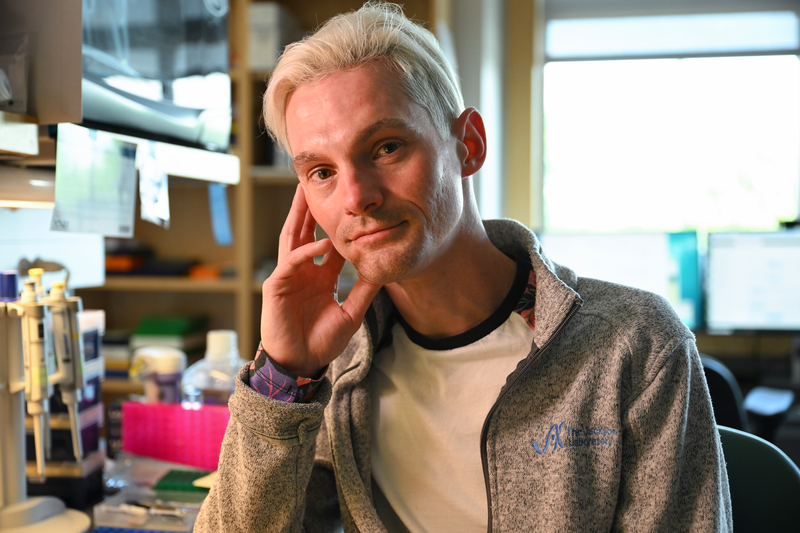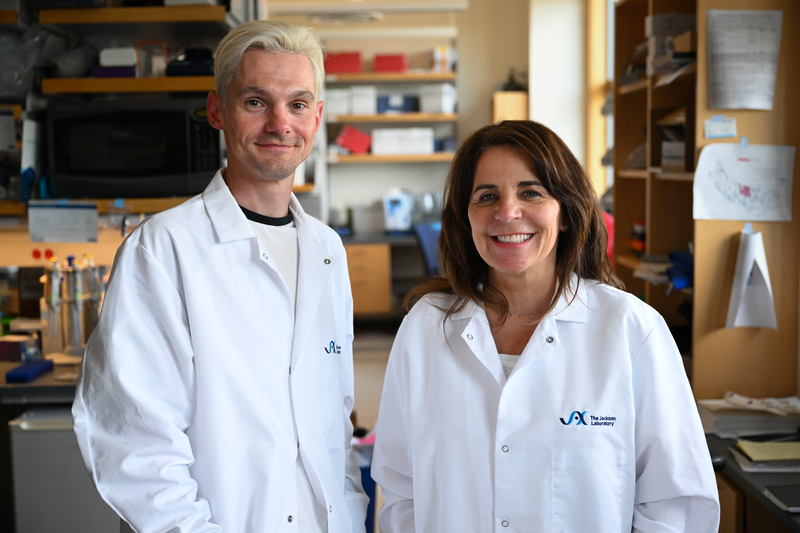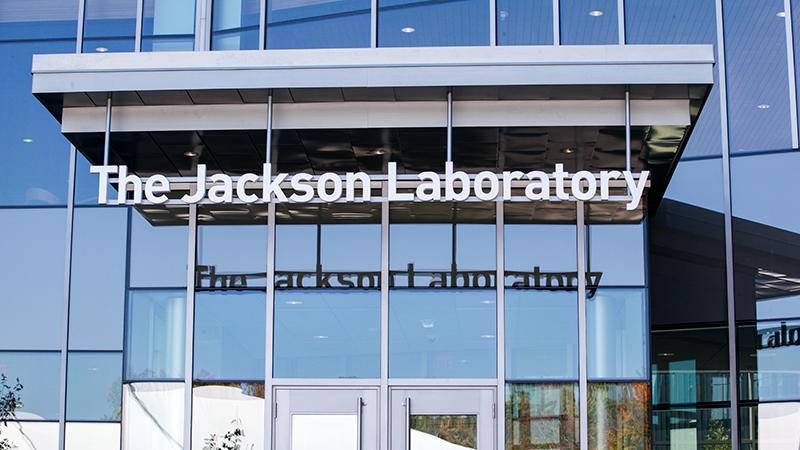Mouse models for ultra-rare disorder could pave the way for nervous system gene editing therapies
Media Release | July 1, 2025
The models offer clear insights into how alternating hemiplegia of childhood progresses—and how it might be stopped
(Bar Harbor, Maine — July 1, 2025) — Scientists at The Jackson Laboratory (JAX) have developed mouse models that survive premature death and enable pre-clinical testing of alternating hemiplegia of childhood, or AHC, a devastating and sometimes fatal neurological disorder that affects about one in a million children with no treatment yet.
The research, newly published in Neurobiology of Disease, reveals how different mutations can lead to distinct outcomes in AHC. It also sets the stage for developing and applying next-generation therapies including gene editing that will help further study how other genetic diseases progress and how best to treat them.
“We need to stop thinking about AHC as a rare disease and start thinking about it and other rare diseases as genetic disorders at large,” said Cathleen (Cat) Lutz, a JAX neuroscientist who led the work. “We’re not just studying specific disorders and their underlying disease mechanisms in isolation — we’re advancing therapeutic technologies that could eventually treat many genetic disorders associated with common neurological conditions.”
A devastating disease
AHC is a rare neurological disorder that typically begins during infancy, causing sudden episodes of paralysis that can last minutes or even days and may be accompanied by dystonia (muscle stiffness), eye movement issues, and developmental delays. Seizures are a significant and life-threatening component of the disease. There is currently no cure. While current treatments aid with symptom management, they have limited effectiveness.
While AHC is often mistaken for epilepsy or stroke, it has distinct features and is linked to specific genetic mutations. Most cases are caused by two mutations in a gene called ATP1A3, which helps regulate electrical activity in the brain. Known as D801N and E815K, these mutations are top candidates for gene-editing and molecular therapy strategies the JAX team is exploring to prevent AHC early on.
This new research revealed how the two separate mutations (though in the same gene) can cause distinct neurological outcomes. Mice with E815K mutations had more severe brain activity abnormalities, including epileptiform spikes, spreading depolarizations, and elevated neuroinflammation — mirroring the more severe seizure susceptibility seen in patients with this mutation. On the other hand, D801N mice experienced more frequent sudden deaths and stronger motor impairments, including dystonia-like episodes and impaired motor learning.

The team also tracked levels of neurofilament light chain (NFL) in the blood, a neuron-specific protein that serves as a general blood biomarker of brain and neuronal health in humans and animal models. They found that specific AHC mutations lead to an increase of this biomarker that helps in developing biomarkers to monitor disease progression or treatment efficacy in patients.
Because AHC may require mutation-specific treatment strategies, JAX scientists are currently working with other teams to correct AHC gene mutations in further studies using mice and human cells. The team is also exploring whether the mutations could be reversed after specific neurodevelopmental periods to determine the stage at which a gene-editing treatment is most effective.
“AHC is a genetic disease and that opens the door to genome editing as a potential treatment, but before we can develop a therapy, we need to understand exactly how the disease works,” Lutz said. “These two new mouse models are a powerful step forward—they give us a way to study these two mutations in action, and more importantly, explore how to fix it in the future."
Research on behalf of patients
The models were bred on a hybrid B6C3H genetic background that significantly reduced early death and fragility seen in earlier attempts to model the disease in mice. This allowed the team to validate their work using a wide range of brain activity, behavioral, and molecular tests to mirror the unpredictable and often frightening spells experienced by children with AHC. These include spontaneous and stress-induced neurological episodes that resemble seizures or muscle spasms triggered by temperature changes, excitement, and other environmental stressors.
Until now, efforts to study the disease in mice were hampered by the animals' fragility and high mortality, as mice often died spontaneously when scientists handled them. This made it difficult, if not impossible to test therapies on them, said Markus Terrey, a JAX neuroscientist who led the work. The new models allow scientists to mimic specific genetic mutations seen in children with AHC—offering the clearest picture yet of how the disorder progresses, and how it might be stopped.
The research comes from JAX’s Rare Disease Translational Center, which focuses on bridging the gap between genetic research and clinical treatment by working closely with other scientific organizations, families, and patient foundations to drive therapies for rare diseases.
“We are working with mice, and we are also doing the necessary research to advance therapeutics for patients and families by understanding, first and foremost, the science,” explained Lutz, who is the vice president of the Rare Disease Translational Center at JAX. “To do that, the patient families and the foundations are really at the center, at the heart of everything we do. We don't just pick up journals and papers to decide what research we do. We're really acting on behalf of the families and the patients, and we have a very close relationship with them.”
About The Jackson Laboratory
The Jackson Laboratory (JAX) is an independent, nonprofit biomedical research institution with a National Cancer Institute-designated Cancer Center. JAX leverages a unique combination of research, education, and resources to achieve its bold mission: to discover precise genomic solutions for disease and empower the global biomedical community in the shared quest to improve human health. Established in Bar Harbor, Maine in 1929, JAX is a global organization with nearly 3,000 employees worldwide and campuses and facilities in Maine, Connecticut, California, Florida, and Japan. For more information, please visit www.jax.org.
JAX media contact: Cara McDonough, [email protected], 919-696-3854
Learn more

Rare Disease Translational Center
To empower rare disease solutions through partnership, innovation, and scaled pre-clinical pipelines, to deliver targeted therapies from lab to clinic swiftly and effectively.
View more
News and Insights
Gain insights into bioscience, technology and the quest to improve human health.
View more